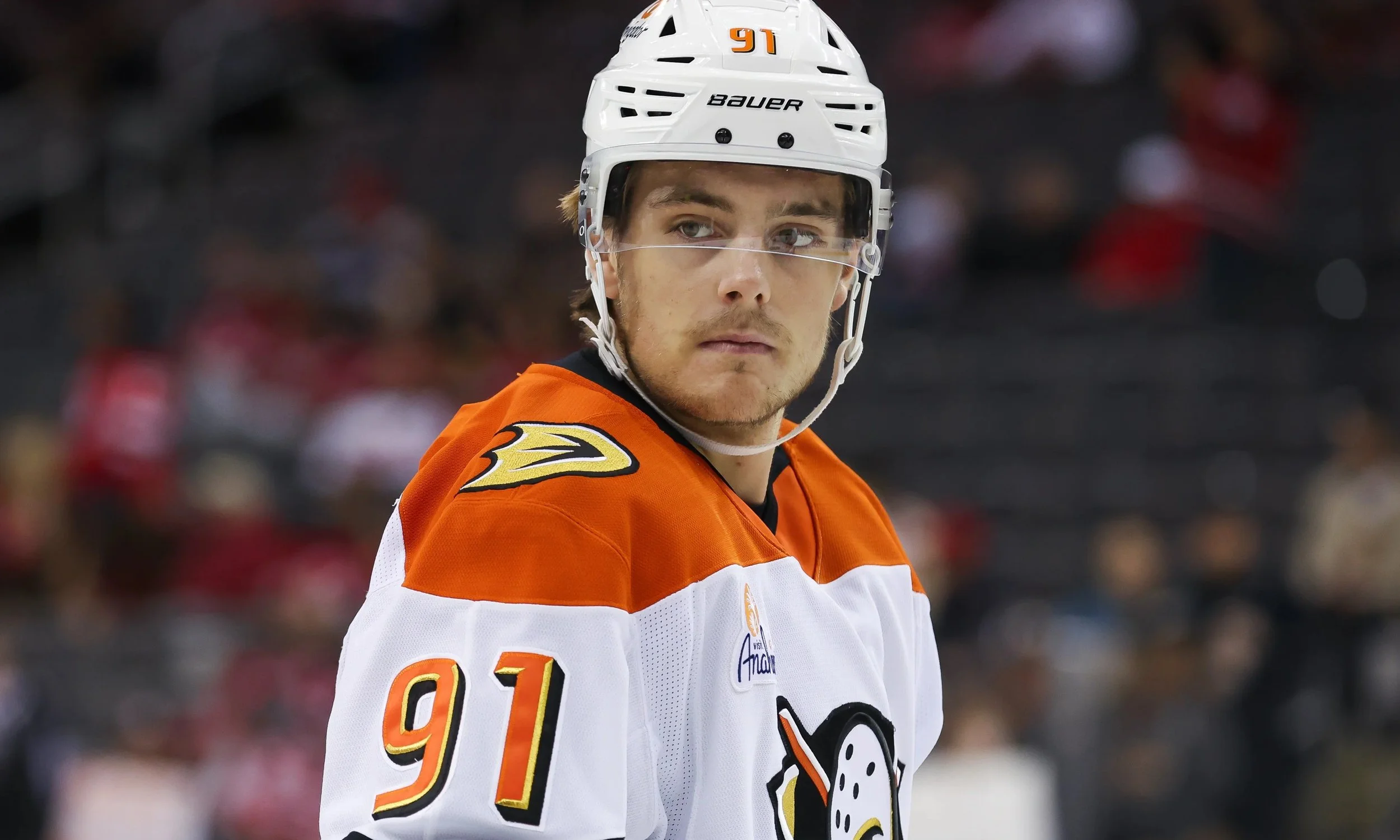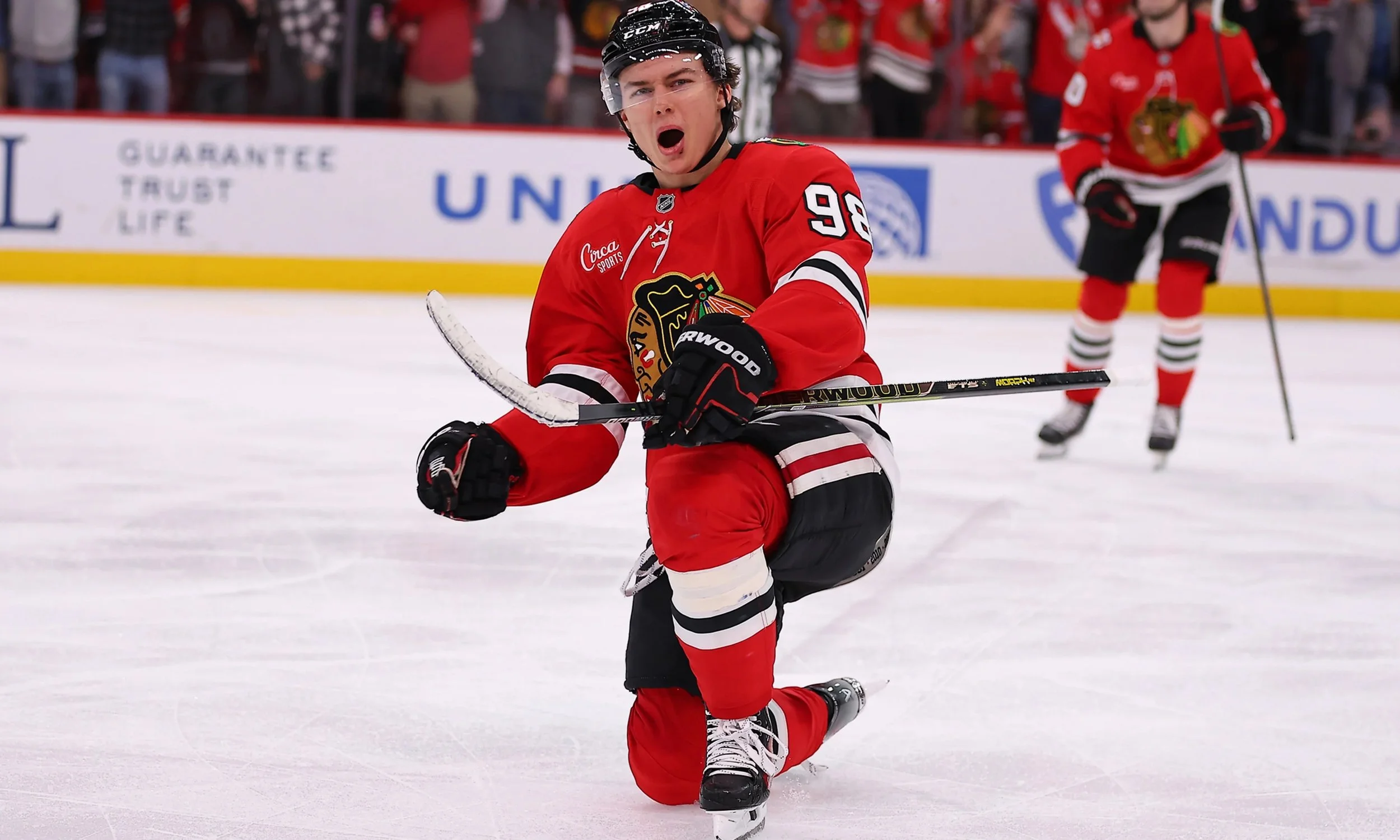November 10, 2025 | 11:25am ET
By Mike Cranwell, TheFourthPeriod.com
RISING STARS TAKING OVER LEAGUE RANKS
Getty Images
Connor Bedard, forward
With this being the first Winter Olympics to feature NHLers in 12 years, the talk around the Olympics is non-stop. One of the major talking points this summer, leading into the fall, had been how failed not-actually-a-generational-talent Connor Bedard can’t possibly be on the Canadian Olympic team this year.
And I get it, how could you bring Bedard, he who didn’t come in and instantly dominate the greatest hockey league in the world while playing for terrible teams, when Canada’s usual stacked roster just won the Four Nations after two instant classics against the USA?
I woke up Saturday morning, and did something I almost never do: check the NHL’s leading scorers. Writing this on Sunday evening, I checked again, and here’s what you see on the NHL’s official stats page:
Well, get ready for the 180 from everyone saying that he wasn’t ready.
It’s not like Bedard is doing this with his own version of a Leon Draisaitl, Mikko Rantanen, William Nylander, or even Jason Robertson. He’s doing it with the likes of Andre Burakovsky, acquired for a player who was immediately bought out by his new team, the ghost of Tyler Bertuzzi, and for a couple of games, 2023 first-round draft pick (19th overall, so not expected to be Ivan Demidov) Oliver Moore.
Both Burakovsky and Bertuzzi have 14 points in 15 games, which places them T-2 for points on the team and has them both on pace for career years. What Bedard has done early this season is what Mario Lemieux used to do in the late-80s with whoever was lucky enough to be riding shotgun.
As much as leading the league in scoring and having seven points in his last two games is impressive – Colorado’s Nathan MacKinnon has since jumped to No.1 heading into Monday’s action with 29 points – as much as the talk of increased speed and an improved shot velocity are important, it was one play in the Calgary game that got me fully driving the Bedard for 2026 Olympics bandwagon.
Bedard is standing in the middle of the ice around the blueline while Flames left wing Jonathan Huberdeau tries to exit the zone with the puck. Bedard, making Jacques Lemaire proud, stands up Huberdeau, who has to circle back and reset. Huberdeau gives the puck to Morgan Frost, who tries the same zone exit, only to be stripped by Bedard who goes in and scores a beautiful goal.
It’s not the goal though, it’s the structure, the attention to detail.
Yes, Huberdeau is no longer an Olympic-level player and Frost never was, but that’s not the point. Bedard’s defensive game was, generously, a mess his first season, and not a ton better last year. This year, he’s able to lead a defensive structure like that, strip a player who has good puck skills and all the momentum while standing still, and create an offensive opportunity. That kind of detailed play, the best league in the world, should have the decision makers of Team Canada standing up and having some very serious discussions about Bedard’s place on their roster as much as his standing among the top scores.
Some other thoughts as we near the quarter point in the season...
Carlsson Watch
Part of why I made some interesting remarks about Leo Carlsson in an earlier article was self-accountability. Not having watched much tape on the 2023 second-overall pick, I knew that those comments would force me to pay attention to him.
Let’s go back to the graphic from the start of the article and expand it a touch, just a wee bit:
For the uninitiated, that is Leo Carlsson’s photo, by the way. On Sunday, he was ourth in the league in scoring, with 12 of those 23 points having come in his last five games against the likes of two-time defending Stanley Cup Champion Florida, 2023 Cup champs Vegas (the last three Stanley Cup winners), a perpetual top-5 team in Dallas, and the rising Detroit Red Wings. So, he’s not only beating up on the San Joses of the world.
Add in Sunday night’s game, and Carlsson is now tied with Bedard for second in the NHL with 25 points.
Watching him play, he looks like he’s straight out of create-a-player mode on NHL ’26. Listed at 6’3”, 208 lbs, he looks every bit as tall and a little heavier (in a good way), with a quality first step, great straight-line speed, and above all else, a confidence that he absolutely can take over a game. He’s a GM’s dream, should be an NHL marketer’s dream, and it’s easy to see the next gen rivalries between Carlsson’s Anaheim Ducks and Bedard’s Blackhawks.
What in the name of Turk Broda?
Toronto can’t seem to get a break right now (which, in life and hockey, often happens when you play like you don’t really care). The latest, and by far worst thing to happen this season, is the back-to-back injuries for Chris Tanev.
Tanev, who by most public analytics sites was one of the top few defensive defensemen last season, was ahead of everyone on the roster except Auston Matthews and William Nylander on the players you can’t afford to lose list.
First came the concussion against New Jersey in late October. Then in his first game back, he took an awkward hit from behind from Matvei Michkov. I’ve seen a lot of opinions on this hit. Some made some sense, while others drove me batty. What no one has touched on is the fact that, when you’re not expecting a hit, you haven’t tensed up your body the way players (in hockey, football, a catcher in baseball) do. The result is that you’re somewhat relaxed, and in that relaxed state, taking even an innocent hit from behind is jarring. Watch the play, watch how Tanev’s back and head/neck snap, because his body is so loose.
Regardless of whether he had completely recovered from the concussion less than two weeks before, that kind of shot, the whiplash it causes, you’re going to feel it. While it came out later that the hit did not cause another concussion (which seemed to calm everybody down), you can’t forget the immediate result, which was Tanev leaving the ice in Philadelphia on a stretcher, his neck braced for his own protection.
Could it have been a stinger? Whiplash? By the way, if it later comes out that this was in fact another concussion, it would be far from the first time that a head/neck injury presented as whiplash and eventually was found to be a concussion. Unfortunately for Tanev, the Toronto Maple Leafs organization, and their fans, we may well be entering into Jake Muzzin territory. Tanev, who like Matthews and Nylander is irreplicable in the role he plays, will need to start considering his quality of life outside of hockey. And hell, much more of this and he wouldn’t even pass the physical.
One final note (because I promised the team here that these wouldn’t all be 3000+ word pieces), the Nick Robertson/Alexis Lafreniere comment in an earlier article almost felt like a snippy quip that would quickly see Lafreniere, the 2020 first-overall draft pick, quickly blow out of the water. And yet... (h/t to RotoWire for this as I’m not quite ready to pay for Stathead yet):
The 53rd pick of the 2019 NHL draft is currently running stride-for-stride with Lafreniere here. In two less games, Robertson has two more goals, the same number of points, a far better +/- (when it’s that substantial at +0.5 per game better, +/- matters), and a PPG, which Lafreniere does not have yet after 16 games. Let’s go a little deeper.
Lafreniere is playing a career high 17:45 per game, with 14:36 of that coming at 5v5 and 3:08 (by far a career high) coming on the powerplay. Zero PPG through 16 games playing that much powerplay time is both an inditement on the player and the system. Contrast that with Robertson, who is also playing a career high in minutes, though only 13:00 per game, and a mere 55 seconds per game coming on the powerplay (those numbers of course being a season average, it’s important to note that over the past five games he’s averaged approx. 15:40 per game and close to 1:30 per on the powerplay, and put up six points in five games). Robertson is T-7 on the team in scoring, and with this recent burst coming with him playing a fair number of top-six minutes, he is making inroads to establishing himself as the top-six winger that Toronto needs. In contrast, Lafreniere is T-3 on his team in points, though if you look at the roster of players below him in scoring, New York is not a deep team, which may well be allowing opposing coaches to focus their top defensive pairings and top forward lines almost exclusively against top players like Lafreniere. That said, Toronto is a two-line offensive team as well, so Robertson would be seeing a similar helping of such players and is making more of an impact.
Digging deeper still (at the end of this, will we find gold?) we see some metrics that illustrate some positive regression is in order for Lafreniere at some point this season. A GF% of only 38.9% yet an xGF% of 63% and an even strength Corsi For of 55.2%, 4.1% higher than his team’s average, along with an astonishing low PDO of 88.7 (where 100 is expected to be the median) tells you that he’s had some terrible puck luck in the early going, and his scoring totals should increase substantially throughout the season.
On the Robertson side, his GF% is 47.1% though his xGF% is 51% and 1.1% higher than the team average (read: he’s also playing D, which wasn’t always the case in the past), which his even strength Corsi For, at 49.1% though 1.7 higher than the team average also illustrates. His PDO is low, though not how-is-Laf-in-the-80s low, at 97.2%, which should rise the longer he plays on lines centered by Matthews or future Hall of Famer John Tavares.
Sixteen hundred words feels reasonable for now, and that Team Canada talk at the start has definitely given me an idea for the next article...





